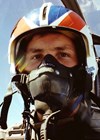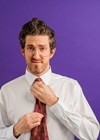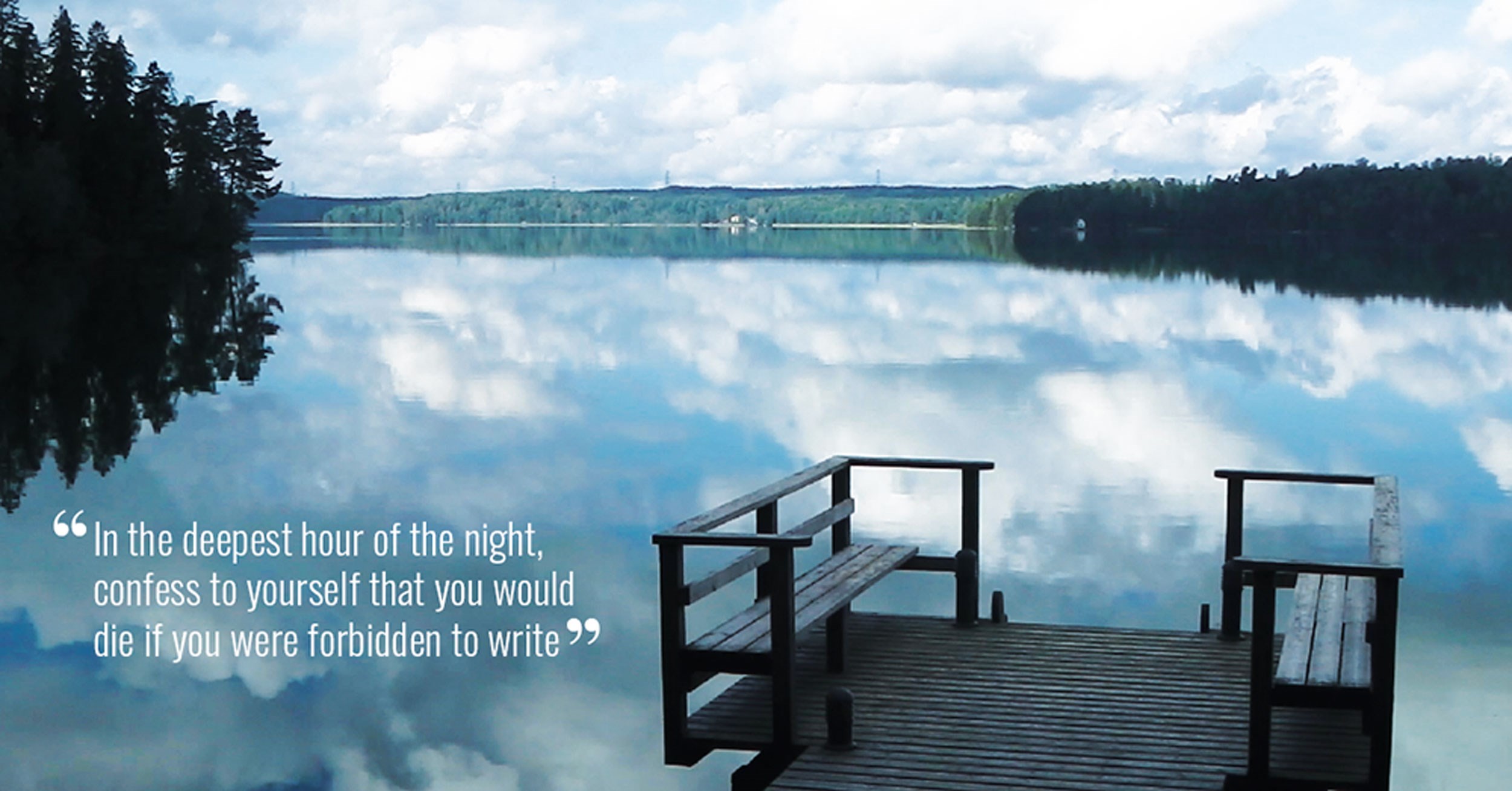
Lake, Sweden, as featured in The Story Of Looking.
In an interview with Director Mark Cousins about his relationship with sight and storytelling, Peter Cackett discusses Cousins’ recent film, The Story of Looking, and how its production informed, and was informed by, his visual experiences of the world.
In the summer of 2022, my colleague, Pankaj Agarwal, informed me that one of the patients on whom he had performed cataract surgery the year before, the Film Director Mark Cousins, had made a film called The Story of Looking. This movie follows Mark as he prepares for cataract surgery and intertwines his own personal experiences with exploring how vision influences our lives and our interaction with the world.
Given that I have now devoted half of my life to the preservation and restoration of vision, I was naturally intrigued and made a point of watching it. The movie took me on an absorbing journey and led me down a rabbit warren of thoughts regarding the sensation of looking. As a result, I had a multitude of questions for Mark Cousins and, via Pankaj, I arranged to interview Mark at his Edinburgh flat one cold December’s evening.
As we sat in his study, surrounded by an impressive collection of books on art, film, and literature, I began by asking him briefly about his childhood.
Mark described growing up in Belfast during The Troubles (late 1960-1998) as like living in a 30-year lockdown. “There wasn’t a lot you could do, and things were very limited, so it focussed you.” Not only was death very visible and a part of life during his childhood, but there was also additional insecurity because his dad was a working-class Protestant and his mother a working-class Catholic, with the family never feeling truly safe. There were tensions in the working-class communities then and his parents had to constantly monitor the situation, trying to keep the mixed marriage a secret and stay ahead of the curve.
Mark was interested in the sciences at high school and was “a total science boy”, as he put it. He considers himself to be good at visual thinking: “I could see a machine, take it apart, and put it back together again.” I was interested in the fact that although he enjoyed science which seems to involve more rigid thinking, he ultimately pursued a career as a film director which requires a considerable amount of creativity. He explained that studying the sciences such as physics or maths does not necessarily demand fixed ideas: “For example, in maths, the square root of minus one is ambiguous and slightly trippy. It’s these aspects of science that were really appealing. If you have a reasonably good brain you get the boring bits quite quickly, but what I wanted to get on to was the Higgs boson particle or whatever the equivalent was back then. So, it was the creative aspects of science that excited me.”
He first developed his love of film around age eight, watching movies on TV that even he admits he probably shouldn’t have seen. One of his earliest memories is of the classic, Orson Welles noir film, A Touch Of Evil (1958), “which was like a brilliant machine”. He developed an instinct for appreciating the structural quality of movies and from the very start found that his eyes “were giving me visual information like I had never experienced before.” It was not really the stories in the movies that attracted Mark, but more the structural aspects. “It really was like having x-ray specs. I was one of those people who was rubbish at lots of things, but I could really see structure, whether that was for an engine, a building, or a film.”
I asked him what he means by ‘seeing the structure’ of a movie. “It’s the space,” he explained. “So, does the film start in a small space and then open up, or does it start as a road movie and end up in a hotel room where people are trying to kill each other? Take any famous film, for example The Godfather. Immediately it was like a black box for me, with aspects such as the top lighting in the film where they are all lit from above. Even as a kid I was able to see and appreciate those features.”
Mark went on to study art and film history at Stirling University. I was interested in what prompted him to subsequently pursue becoming a film director and he described his desire to make films as “a compulsion and a complete intoxication”. He then went on to illustrate this with a story. “I knew Dennis Hopper. James Dean gave Dennis Hopper a book, Letters to a Young Poet by Rainer Maria Riike, which he then gave to me. In this book it says: ‘In the deepest hour of the night, confess to yourself that you would die if you were forbidden to write.’ For me, it was that feeling of you just have to do it and nothing will stop you, and that’s what I had.”
Mark’s career in filmmaking began in Edinburgh. After university, he was a security guard for a long time, then a waiter, and a furniture remover. He then had an idea whilst sitting in a café. “I wrote the idea on a napkin and I sent it to Channel 4. They commissioned the napkin.” His proposal was a TV series called Heavenly, which ultimately starred Alan Cumming. He described the premise, which was where an angel would live on Arthur’s Seat and would come down every day and meet real people. He scripted the angel’s parts and the real people were shot documentary style. As his first work he felt that “the idea was good but the result wasn’t very good, but I was 25-years-old and suddenly I was writing and directing, so it was a starting point.”
Over the following 30 years, Mark has gone on to have a prolific career in the film industry, including presenting the memorable BBC cult film series Moviedrome (1997-2000) where he introduced his own personal choice of films, including Westworld (1973) and Demon Seed (1977), and the long-running TV programme Scene by Scene (1996-2003), which involved interviewing many famous actors and film directors such as Lauren Bacall and Jack Lemmon. He has also directed numerous documentaries including the film The Story of Film: An Odyssey (2011), for which he is best known.
However, the movie which prompted this interview is one of his recent releases, The Story Of Looking (2021). Although Mark first wrote the book of the same title, published in 2017, it was the subsequent development of a cataract that initiated the movie. “The cataract came on quite quickly, so I thought why don’t I make a movie which focusses on the eye problem and so that was the idea.”
I was intrigued as to why he chose to examine the subject of looking and what he believes is the fundamental essence of this sensory experience. To illustrate this, he used a quote from Virginia Woolf which features at the end of the movie:
“The eye is not a miner, not a diver, not a seeker after buried treasure. It floats us smoothly down a stream; resting, pausing, the brain sleeps perhaps as it looks.”
He explained that there is a slightly bourgeois culture that believes that to look really well involves filtering, selecting, and judging. However, his opinion is that the real joy in looking lies in not analysing. “For me, what is really exciting is when you become a non-person and let your eyes drift across the world. I like the idea that when you are looking really well, you’ve switched yourself off, and that excites me. It’s trancey. It’s like dancing at three o’clock in the morning in some club, with some beer and your top off. It’s kind of a joyous, unreflective experience.”
During the movie, Mark clearly finds the development of a cataract and the disturbance of his visual world quite distressing and I asked how he felt as his vision deteriorated. He explained that it was as if a part of him was dying. In the film, he states that the best things about himself are his eyes and his legs and feels that if he couldn’t walk or couldn’t see, he will die a bit. “Seeing in particular has been so central to my mental health and I was really worried, is that going to go?” He says “we take looking for granted, but it is so much about the future, and the future is closely related to feelings about optimism. If your optimism and joy in being alive is closely related to your eyesight, then it can become scary when something is changed.”
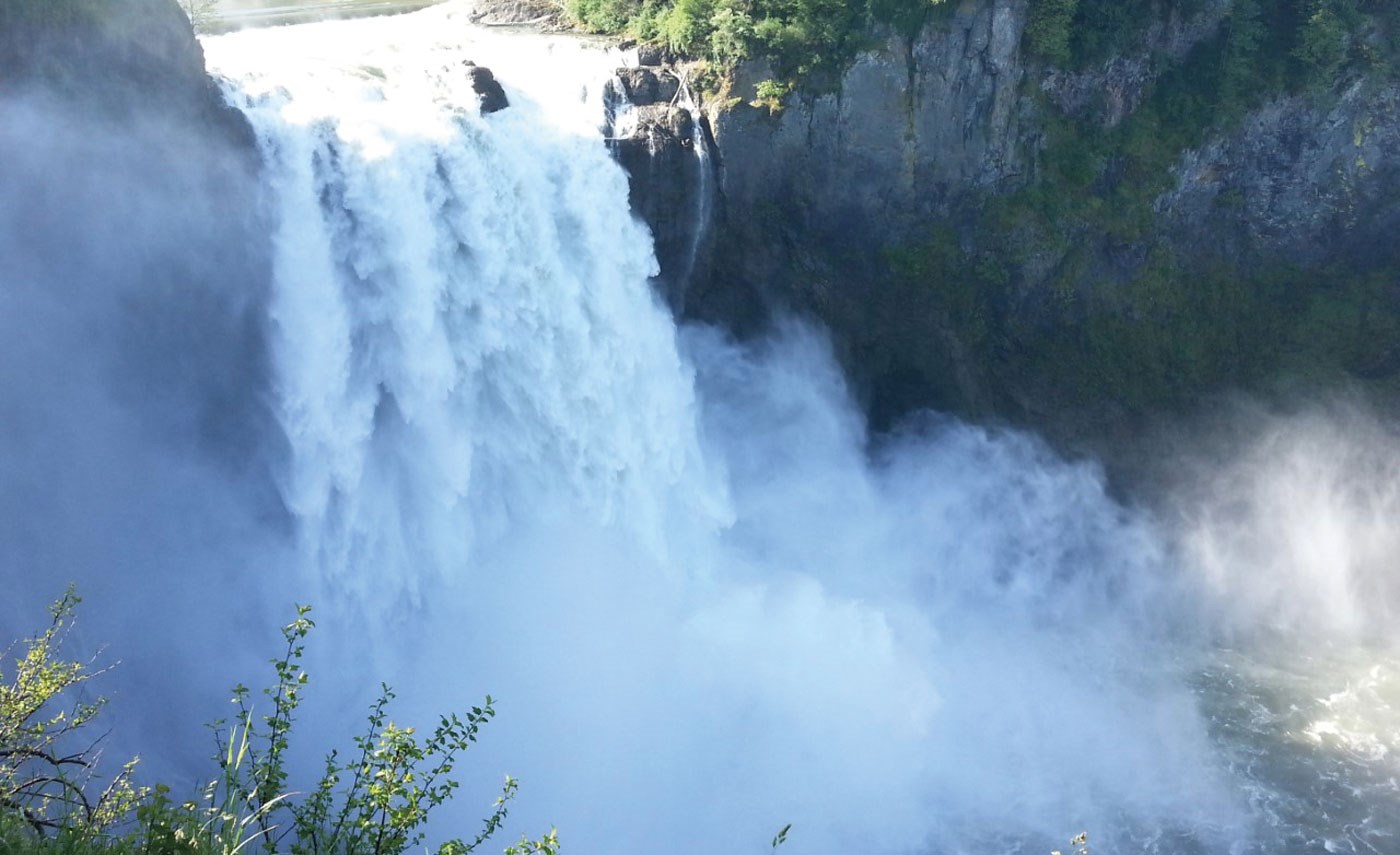
Snoqualmie Falls, Washington State, 2013. “You feel as if you’re in a waterfall."
Mark subsequently undergoes cataract surgery under local anaesthetic which we see performed by my colleague, Pankaj. He described the whole experience as being very unusual. “You feel as if you’re in a waterfall. That’s why in my film there are a lot of themes about water. It’s quite trippy in a way and an unforgettable experience.”
Following the surgery, a bit later in the film, Mark is lying in bed and takes the plastic shield protecting his eye off. He becomes emotional and starts to cry and I wondered if they were tears of happiness or relief. “They are tears of sadness because I looked around my bedroom and my eyesight was worse and I thought oh **** this is me permanently,” he explained. His expectations had been high as many of his friends had told him that cataract surgery was amazing and he would immediately see better. However, it was about five days before he noticed any improvement. “Then I really cried a lot when I realised that my life had been massively improved by this operation. I looked out the window and saw the building opposite in a way that I hadn’t in years. I felt as if I had been reborn.”
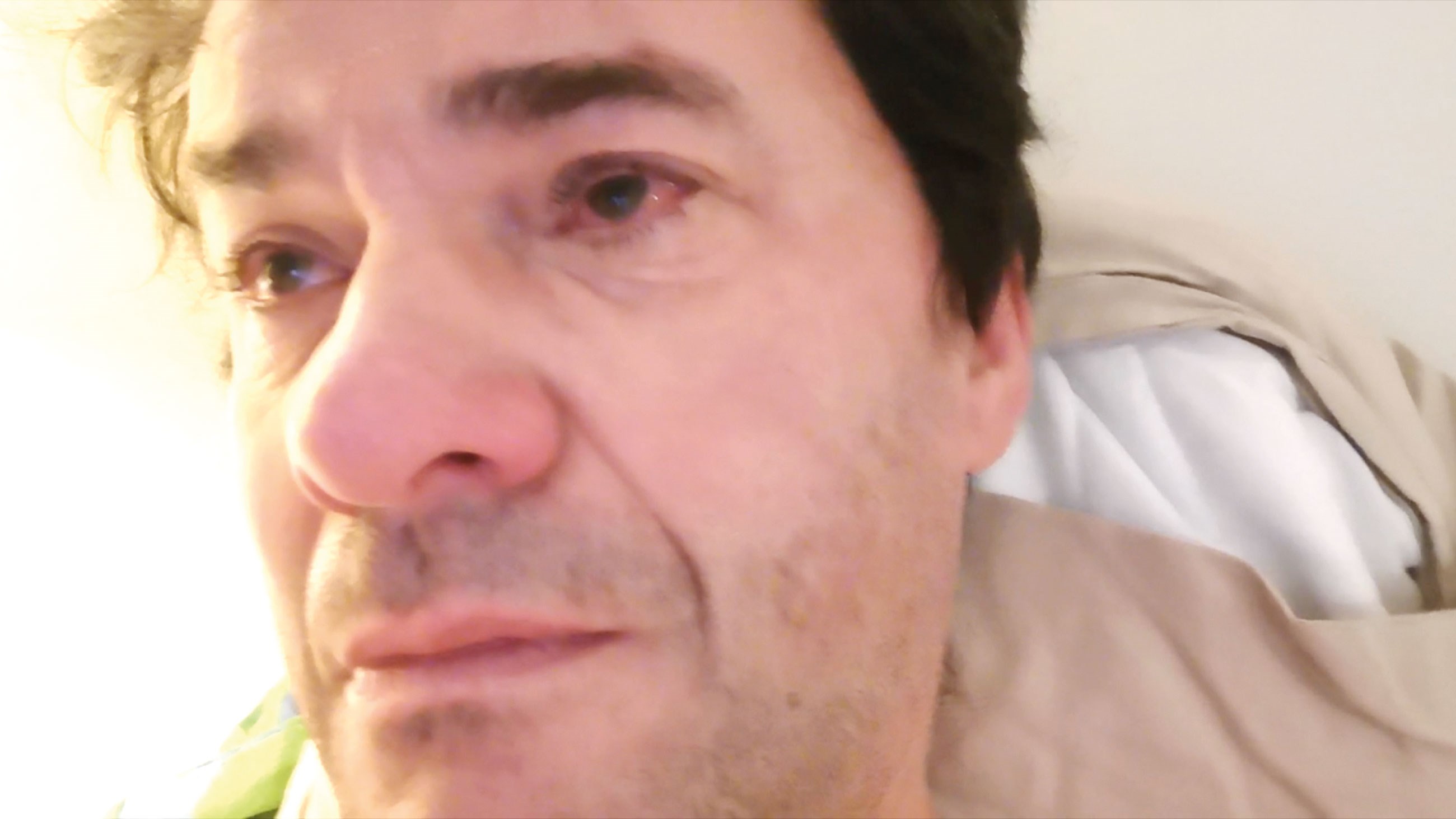
Emotions run high the day after cataract surgery.
Given one of the underlying themes of the movie is ageing, with Mark getting older and developing a cataract, I asked him about the theory that time seems to pass much faster as we age because we are not experiencing as many new visual stimuli. Mark agreed and thinks this is crucial. “We are renewed by new visual experiences and when you see something new you feel ageless. The visual rejuvenation when you travel in terra incognita and see something for the first time, such as the northern lights, is so remarkable that it sticks. I’m sure when I travel to Iceland in two days for the first time, I will feel like a 12-year-old again.”
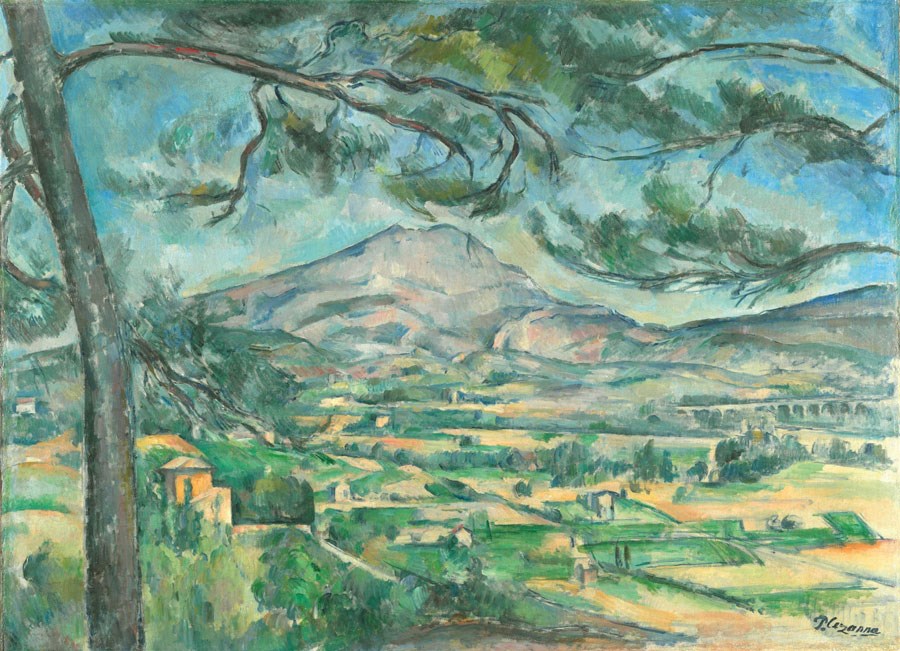
The Montagne Sainte-Victoire with a Large Pine, Paul Cezanne, 1887.
Throughout the movie, Mark uses many artists and paintings to illustrate the theme of looking, so I was curious to know which artist he believes to exemplify this concept the most. For him, it is Paul Cezanne, and in particular the mountain Mont Sainte-Victoire in Provence which he depicted in a series of oil paintings in varied themes and lighting conditions. Mark explained that “Paul Cezanne went so often to look at the same mountain, and no matter how many times he looked at it, he was excited. I think lots of us have the question, if you have lived somewhere a long time and seen the same street every day; if you have seen the same person every day; if you have been with the same partner for a long time, is that boring or is it the opposite? Paul Cezanne realised it was the opposite. Each time you look it is a deeper and more brilliant thing.”
Given that Mark has had an enormously successful career in the film industry, having directed over 50 movies with multiple awards to his name, I asked him what he considers to be the art to good filmmaking. Mark explained that the conventional wisdom taught by every art and film school is that a filmmaker is a creative person who has something within them that they need to express. However, he doesn’t think that this is true and that instead the art of good filmmaking actually lies in looking outwards. “You need to look and see things that are fantastic and brilliant and then shape them. I think in my movies, that’s what I do. It’s look how brilliant the world is and I am really good at shaping that story.”
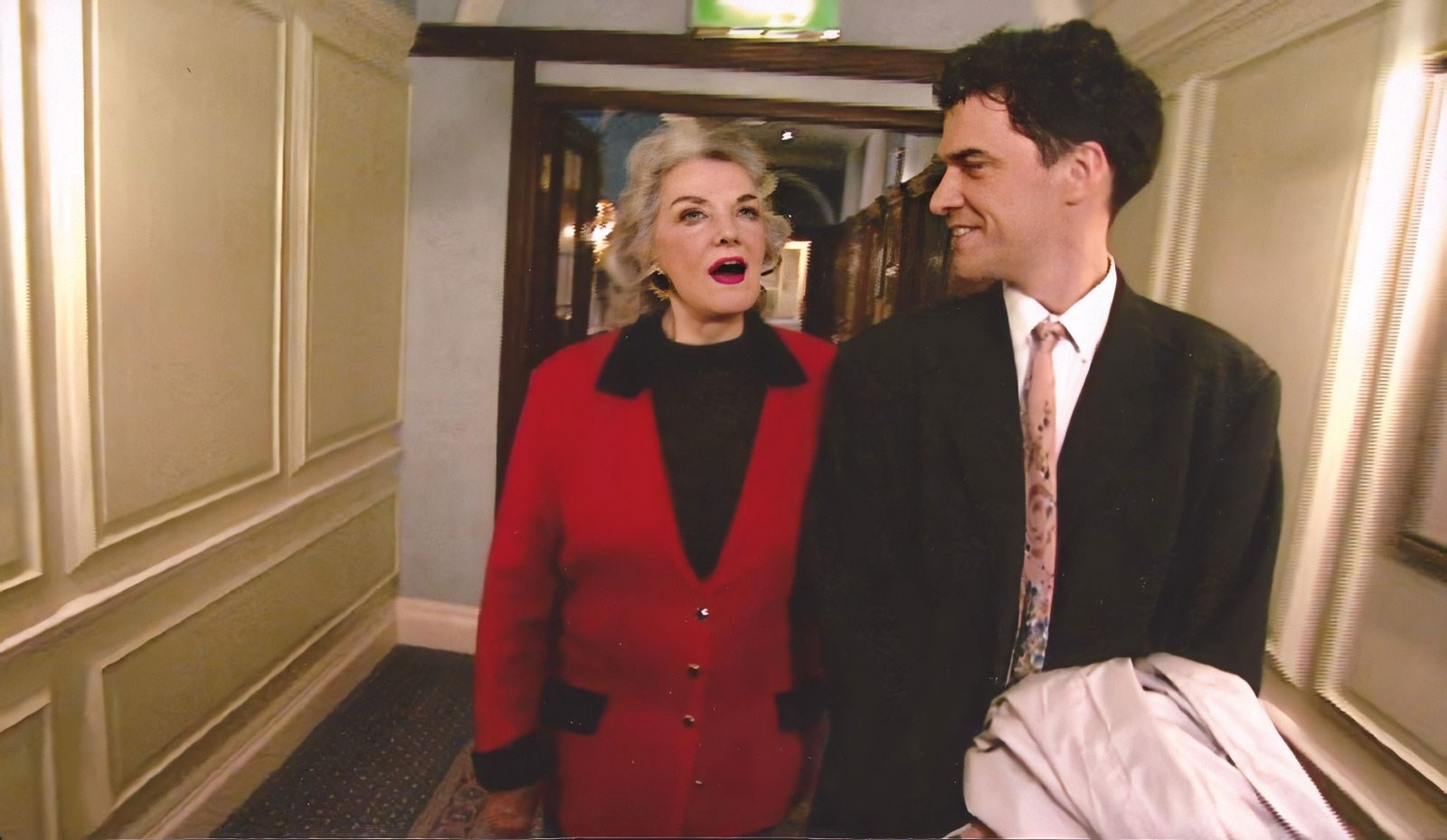
Mark Cousins and Jane Russell, Caledonian Hotel, Edinburgh, 1998.
Mark has met and interviewed many film directors, actors, and actresses throughout his life and so I asked him who he has enjoyed meeting the most. With regards to film directors, it is Paul Schrader, who was also a screenwriter and wrote the screenplays for both Taxi Driver (1976) and Raging Bull (1980). “He and I drank two bottles of wine in a loft in New York and I really learnt so much from him.” From the acting world it is the actress, singer, and model Jane Russell who was most famous for starring in the movie Gentlemen Prefer Blondes (1953) alongside Marilyn Monroe. “She was one of the icons of the mid-20th century. She was gentle and lovely and came here to this flat in Edinburgh and we went to the pubs and got p***ed. She was totally adorable.”
I asked Mark what one piece of advice he would give a young person embarking on their adult life. “Aim high,” he said, elaborating with a quote from the celebrated French Filmmaker Robert Bresson: “Make visible what, without you, might perhaps have never been seen.”
Therefore, his guidance to anyone is to look at what you can do in your profession that nobody else has ever done before. “In the film industry and storytelling, it means what stories have we not seen?” he continued. “It’s not to say that the previous stories have been bad or boring because they are valuable, but how do we continue to advance our art form?”
Finally, I asked Mark what he considers to be the meaning of life. “Life has literally no meaning,” he replied. “However, there is experience. There is right here, right now, and the pleasure of talking to someone you haven’t met before. There is no meaning but there is massive, overwhelming, rapturous experience.”
With that, the formal part of the interview drew to a close, and we proceeded to drink a couple of bottles of wine before I navigated my way home on the night bus, with a resolution to appreciate more and not take for granted the gift of looking.
As I sat on the bus travelling home and gazed out at the city lights and the ghostly figures passing by, some of Mark’s words from earlier that evening entered my head: “There is an awful lot to see. If I wake up after the sun has come up, I feel like I have missed something major. The sunrise each day is slightly different, and you don’t want to miss any of that.”
COMMENTS ARE WELCOME




